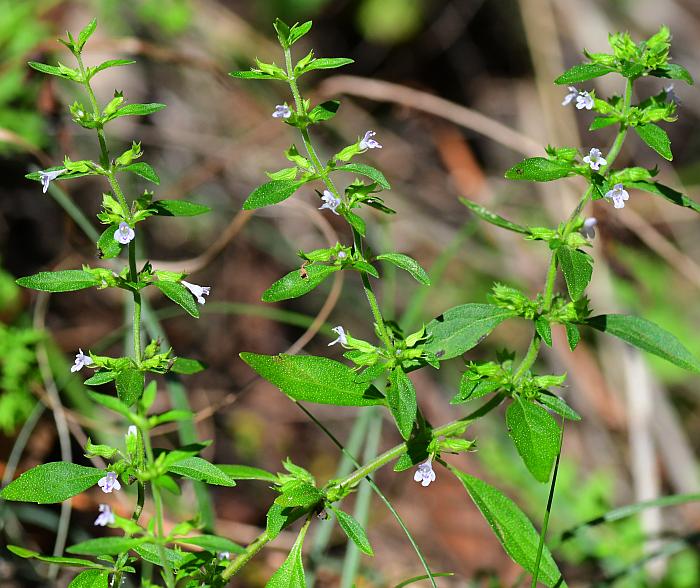Hedeoma pulegioides (L.) Pers.
Pennyroyal

Native
CC = 4
CW = 5
MOC = 59
© SRTurner
Hedeoma pulegioides (L.) Pers.Pennyroyal | |
 |
Native CC = 4 CW = 5 MOC = 59 |
© SRTurner |
|
Family - Lamiaceae Habit - Taprooted annual forb. Stem - Ascending to erect, to 35 cm, sharply 4-angled, usually branched, finely pubescent with spreading hairs.
Leaves - Opposite, simple, on petioles to 8 mm long. Blades lanceolate to elliptic or ovate, pointed at the tip, the margins with at least a few irregular teeth, the upper surface glabrous, the undersurface sparsely and finely hairy, also with usually conspicuous sessile glands.
Inflorescences - Small axillary clusters at most nodes, the flowers on short stalks with narrow bractlets at the base.
Flowers - Calyces zygomorphic, somewhat pouched along 1 side at the base, cylindric, 3.5-5.0 mm long, the tube strongly 13-nerved, 2-lipped, the lobes shorter than to about as long as the tube, the upper lip deeply 3-lobed and sometimes spreading upward, the lower lip deeply 2-lobed and straight to slightly arched upward. Corollas zygomorphic, 5-6 mm long, nearly white to pale bluish purple, the lower lip sometimes with lighter or darker spots or mottling toward the base, the outer surface moderately short-hairy, the tube narrowly funnelform, relatively shallowly 2-lipped, the upper lip unlobed or shallowly notched, the lower lip slightly concave. 3-lobed. Stamens 2, not exserted, the anthers small, white or pinkish-tinged. Ovary deeply lobed, the style appearing nearly basal from a deep apical notch. Style not exserted, unequally 2-branched at the tip.
Fruits - Dry schizocarps, separating into 4 nutlets, these 0.7-0.9 mm long, obovoid to nearly spherical, dark brown or black, smooth or finely pebbled, glabrous, somewhat shiny. Flowering - July - September. Habitat - Glades, upland prairies, forest openings, bluff tops, streambanks, pastures, old fields, open disturbed areas. Origin - Native to the U.S. Lookalikes - H. hispida. Other info. - This plant is often overlooked, being small in stature with inconspicuous flowers. It occurs across most of Missouri with the possibly exception of the northwest corner of the state. Missouri is near the western edge of the plant's natural range, which extends in a broad band eastward and northward, through New England and into Canada. The strong, minty fragrance of the foliage when bruised is a strong clue to the identity of the plant. It resembles its sibling H. hispida but has wider leaves, with blunt teeth also present on some of the leaf margins. Photographs taken at Valley View Glade Natural Area, Jefferson County, MO, 8-9-2019 and 8-14-2020, and at Don Robinson State Park, Jefferson County, MO, 9-6-2021 (SRTurner). |